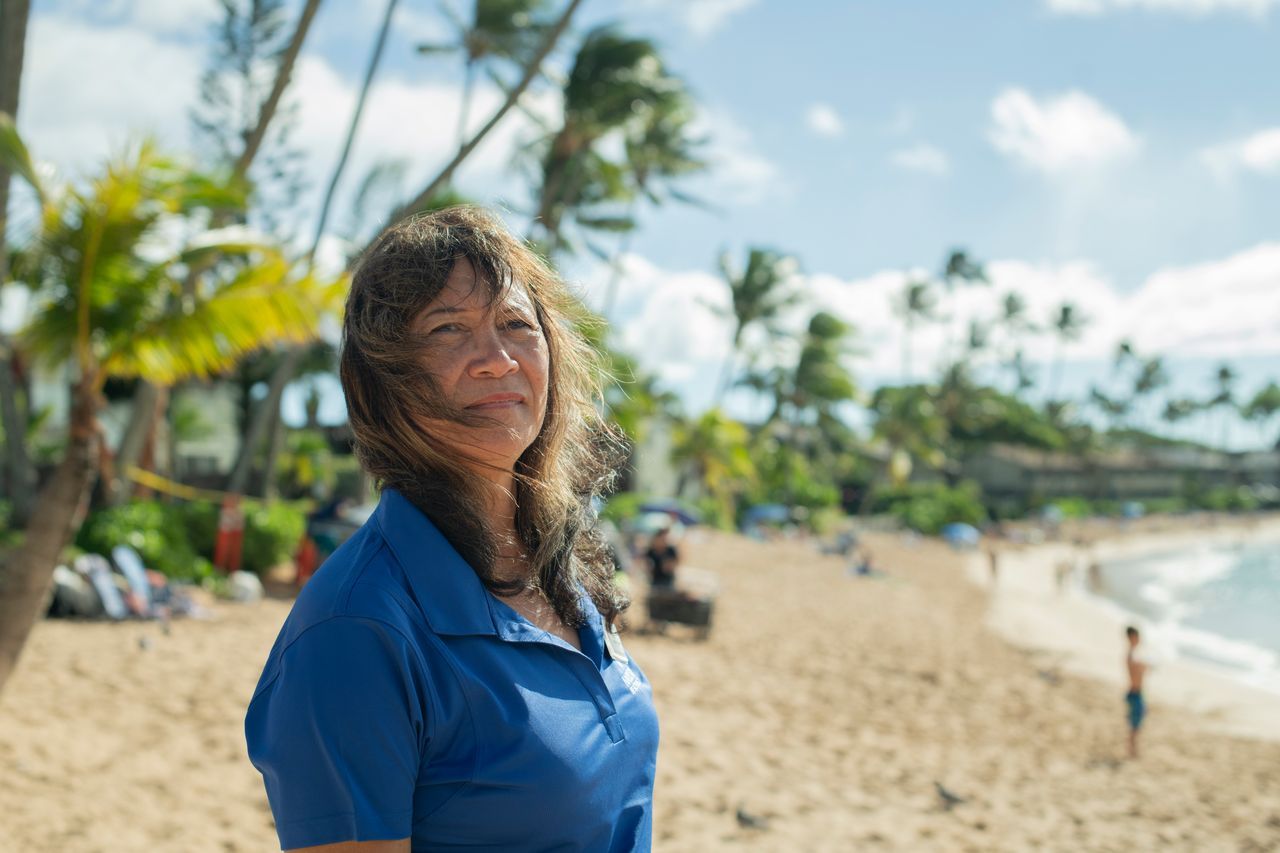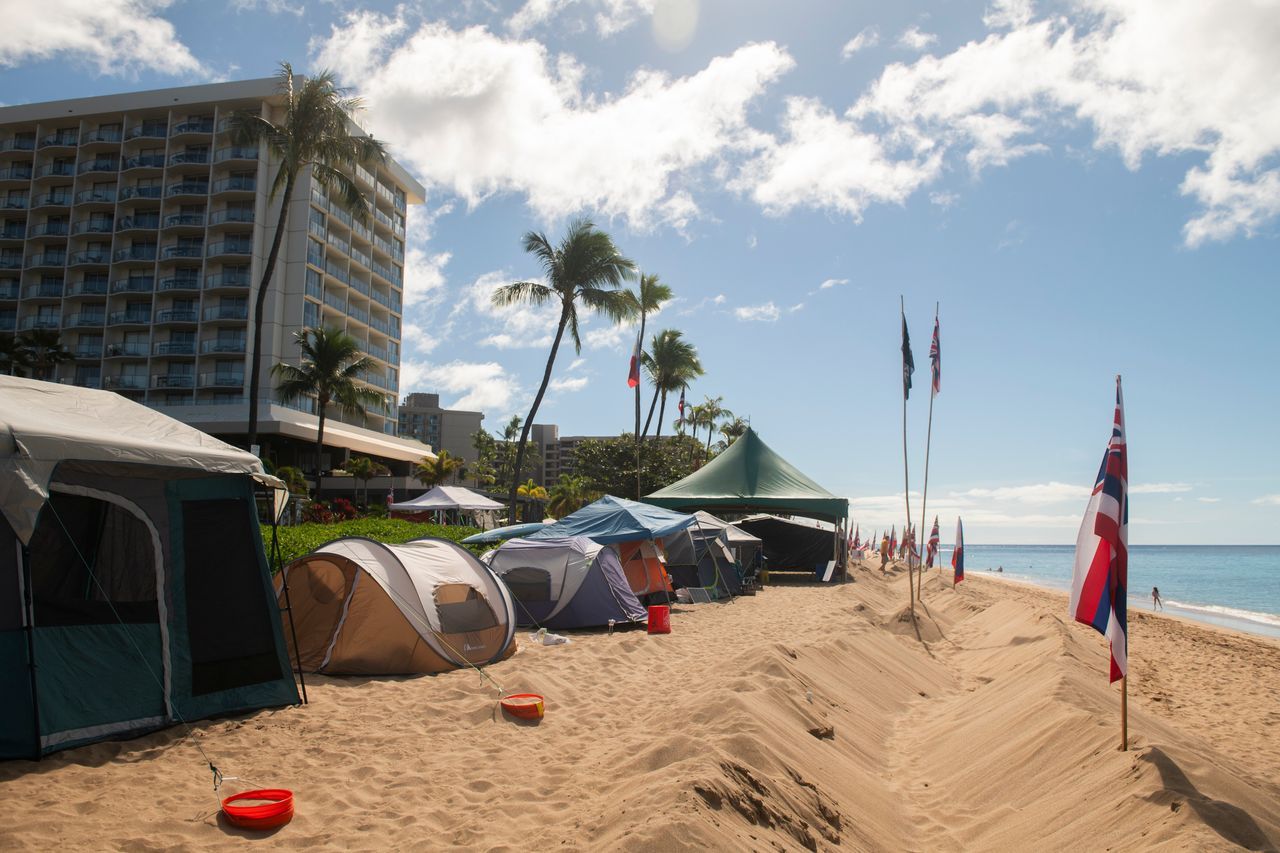MAUI, Hawaii—Welo Noury is living at a resort that overlooks the golden sands of this island’s famed Ka’anapali Beach.
But most days, the 40-year-old lūʻau performer can barely bring herself to go outside.
“Sometimes, I don’t even leave my room,” said Noury, who along with thousands of other residents lost her home in a firestorm that hit Maui’s historic town of Lahaina in August.
It has been too difficult, she said, to see happy tourists clinking glasses or strolling the seaside promenade in front of the condominium where she is staying.
Nearly five months after an Aug. 8 wildfire destroyed the town of 13,000 and killed at least 100, most residents remain displaced and likely face a yearslong wait to rebuild their homes. Some have left the island and others have doubled up with family and friends. More than 6,000 have been put up by the American Red Cross in hotels and condos much like where many worked.
As a result, the tightknit community—more village than town—has been abruptly scattered, creating a diaspora of survivors throughout Maui and off the island.
“A lot of people I know, Lahaina is home,” said Keao Shaw, who owns a charter boat business that employed several people who have left the area since the fire. “They want to come back to West Maui as fast as possible but there’s nothing to rent.”
The dispersion could also lead to long-term staffing shortages and impede the region’s tourism and economic recovery.
State economist Eugene Tian said the fires on Maui, and the subsequent drop in visitors, have delayed Hawaii’s post-Covid tourism recovery by another two years. Locals and activists insist that without workforce housing for displaced Lahaina residents, that forecast could worsen.
The loss of more than 3,000 homes destroyed in the blaze turned the island’s already acute housing shortage into a full-blown crisis. Unlike most mainland communities destroyed by fire, the residents of Lahaina have far fewer housing options on an island where tens of thousands of units are used as short-term rental properties.
Using hotels and other vacation properties to house Lahainans provided temporary relief, but isn’t a great solution for those clamoring for stability. Nicole Huguenin, co-lead of the Maui Rapid Response citizen team, said the displaced have been moved an average of eight times since the fire.
State and local government officials are hoping to entice owners of vacation rentals to accept long-term leases for displaced families. The Maui County Council is considering hefty tax breaks for those willing to convert their short-term rentals to housing.
On Dec. 15, Hawaii Gov. Josh Green said that with increased funding from the Federal Emergency Management Agency, owners who sign on to help could receive “fair market rent,” for those units. Green said he is considering an emergency moratorium on short-term rentals if enough owners don’t volunteer.
Red Cross officials said the number living in hotel and condo rooms under their care has decreased from more than 8,000 in September to 6,200 in December, as more property owners have converted units to long-term rentals. They said they expect to get everyone into long-term arrangements by the end of March.
The hotels would like to return to normal operations, too. The Royal Lahaina Resort & Bungalows has filled all 504 of its rooms with 1,000 fire victims, including 100 of its employees and their families, but in doing so has had to close its retail, spa and banquet operations, said Stephen Hinck, its general manager.
“We’re trying to do the right thing,” Hinck said on a recent golf cart tour of the beachfront property.
Shaw, the charter boat captain, said his tour bookings have declined by 75% since the fire. He worries that with the community scattered, there will be fewer people to staff a robust return to tourism, if it ever comes.
A fifth-generation Hawaii resident, Shaw is staying north of Lahaina, renovating an abandoned building on his family’s property. His wife and two young children are with relatives on Oahu and will join him eventually, but for now, FaceTime calls have to suffice.
Kevin Campbell, who worked for Shaw, said he and his wife were initially determined to remain in Lahaina, where the home they rented burned down weeks before they welcomed their first child. He and his family are now living on the Big Island, where he has purchased a boat and is starting his own tour business. The couple’s closest friends are all scattered—one to Michigan, another to South Carolina and some to other Hawaiian islands.

“We just knew what we had and what we wanted to preserve,” Campbell said. “And then we realized it was gone already.”
Kirsten Matthews, a 27-year-old restaurant worker whose home burned down, moved back to Michigan after the fire and is currently staying with her sister. She is considering going back to school to get a teaching credential and thinks most young workers like her likely won’t return to Lahaina to live. “There’s going to be a lot of different people there, different jobs, different businesses,” Matthews said.
Life is hard for those left behind. Kukui Keahi, 33, said she and 50 other Native Hawaiian family members lost 10 homes and now live all over Maui.
“I’m terrified at the idea of starting all over again,” said Keahi, who moved in with family on the other side of the island.
Lorene Akiona had shared her seven-bedroom home with two grown children and her parents, but after the fire, ended up in a room at the Napili Kai Beach Resort where she worked.
“The number one thing I missed was family,” said Akiona, 57, a recreation manager at the resort where she stayed with her children away from her parents and many other relatives in Lahaina. “I would cry and cry.”
Akiona left the hotel after a month to live with a sister in Wailuku, about an hour away from her job. On Dec. 17, she moved into permanent housing with the help of her parents, but learned just five days later that her father, Lloyd Akiona, died at age 78. “With all this fire and everything, I think his heart just gave up,” she said through tears.

The number of Maui residents who have received mental-health care via state clinics since the fire is 1,300, or about 10% of the town’s population, said John Oliver, the island’s mental health coordinator for the Hawaii Department of Health.
On a recent afternoon, Noury and many of the other victims talked and laughed as they wrapped donated holiday gifts for displaced children in a vacant storefront in Kahului.
But away from the others, she confessed she wasn’t feeling much aloha after being stuck in a hotel room with her husband and their four children for months. “Right now, I’m not living, I’m going day by day,” she said. “I’m moving away until my house is rebuilt.”
Write to Jim Carlton at Jim.Carlton@wsj.com and Christine Mai-Duc at christine.maiduc@wsj.com



